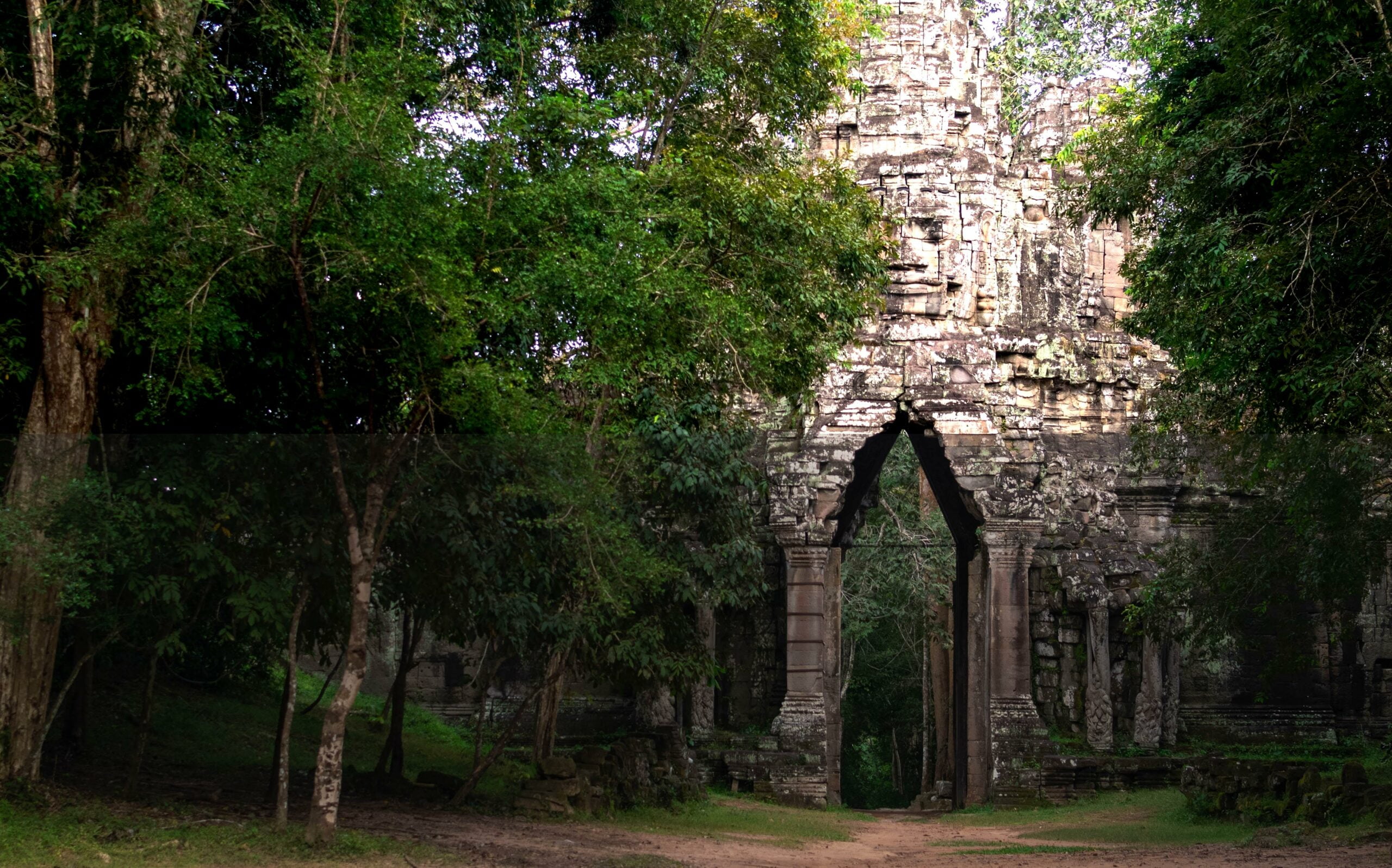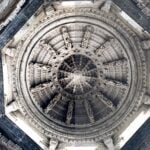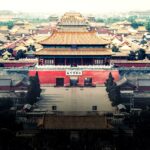Step back in time and immerse yourself in the grandeur of ancient China’s architectural marvels. In this captivating article, we delve into the awe-inspiring world of Famous Ancient China Buildings, where history seamlessly fuses with architectural prowess. Join us as we unlock the hidden tales behind these majestic structures, unveiling their historical significance, architectural innovations, and enduring cultural impact. Prepare to be enthralled by the fascinating narratives that bring these age-old masterpieces to life, inviting us to marvel at the wonders of ancient Chinese culture and its architectural legacy.
Famous Ancient China Buildings
China, a treasure trove of architectural marvels, boasts a rich and storied history that unfolds in its ancient buildings. These magnificent structures offer a glimpse into the cultural, artistic, and engineering prowess of the past. Join me on a captivating journey as we unveil some of China’s most famous ancient buildings and delve into the secrets they hold.
The Great Wall of China: An Emblem of Imperial Power
Standing tall against the test of time, the Great Wall of China is a testament to the grandeur and ambition of ancient Chinese rulers. With a construction that spanned centuries, this colossal feat of engineering stretches over 13,000 miles, traversing inhospitable terrains and majestic landscapes.
Incorporating watchtowers, battlements, and fortified passes, the Great Wall was designed to withstand invasions and protect the Middle Kingdom from nomadic tribes. It represents a confluence of defensive architecture and the sheer will of a nation. But there’s more to this architectural wonder than meets the eye.
Did you know that this monumental masterpiece provided more than just defense? It enabled the transportation of goods, facilitated communication, and served as a symbol of unity. The Great Wall, with its centuries of legends and historical significance, is an unrivaled testament to the brilliance of ancient Chinese engineering and ingenuity.
“The Great Wall of China stands tall as a symbol of resilience and imperial might, whispering tales of ancient dynasties and the indomitable spirit of the past.”
The Forbidden City: A Glimpse into Imperial Splendor
In the heart of Beijing lies a majestic complex that once served as the imperial palace of China—the Forbidden City. This architectural gem, spanning 180 acres, encapsulates the grandeur and opulence of the Ming and Qing dynasties.
Step through the towering Gate of Heavenly Purity, and you’ll find yourself immersed in a world where emperors and their concubines once roamed. The Forbidden City’s layout follows strict principles of feng shui, with its majestic halls, ornate pavilions, and intricately designed gardens blending harmoniously to create a regal symphony of beauty.
The Forbidden City not only served as the political and ceremonial center of China for centuries but also housed an extensive collection of art, artifacts, and imperial treasures. Its architectural mastery and cultural significance earned it a place on the UNESCO World Heritage list and continues to captivate visitors from across the globe.
“In the heart of Beijing, the Forbidden City unveils the spectacular world of emperors and empresses, inviting us to revel in the grandeur of the past.”
The Temple of Heaven: Where Heaven Meets Earth
Imagine a setting where the earthly realm intersects with the spiritual plane—a place where emperors performed rituals, seeking divine favor for a prosperous empire. This sacred site is none other than the Temple of Heaven.
With its stunning circular architecture, the Temple of Heaven stands as a prime example of ancient Chinese cosmology and religious beliefs. Its design embodies the harmonious balance between heaven and earth, deemed vital for a stable and prosperous empire.
The temple complex, encompassed within a serene park, features the magnificent Hall of Prayer for Good Harvests, the Imperial Vault of Heaven, and the Circular Mound Altar. Each structure boasts intricate details and symbolic design elements that reflect the spiritual reverence of the time.
The Temple of Heaven is a living testament to the spiritual beliefs and architectural genius of ancient China. It provides a window into a world where rulers sought harmony with the divine to ensure the prosperity of their people.
“As the Temple of Heaven bridges the gap between our mortal existence and celestial realms, we are reminded of the interplay between spiritual devotion and earthly power.”
The Terracotta Army: Silent Sentinels of a Buried Empire
Deep beneath the soil of Xi’an resides a terracotta army of epic proportions, a testament to the military might and unyielding legacy of China’s first emperor, Qin Shi Huang. This awe-inspiring Terracotta Army was created to accompany the emperor in the afterlife, protecting him and acting as an eternal guard.
Imagining the sheer magnitude and dedication required to create an army of over 8,000 life-sized soldiers, horses, and chariots is simply staggering. Each intricately carved figure, with its unique features and expressions, tells a story of craftsmanship and devotion, preserving the legacy of an ancient empire.
The discovery of the Terracotta Army in 1974 has since captivated the world, unveiling the secrets of a bygone era. Emperor Qin Shi Huang’s quest for immortality through monumental mausoleums is vividly realized in this UNESCO World Heritage site, offering a glimpse into the rich cultural and historical tapestry of ancient China.
“In Xi’an’s subterranean depths, the Terracotta Army silently stands guard, immortalizing a dynasty’s ambition and the indomitable spirit of China’s ancient warriors.”
As we delve into the realm of ancient China’s famous buildings, we uncover more than just architectural wonders. Each structure echoes with stories of emperors, dynasties, and the cultural legacy they left behind. From the Great Wall’s enduring strength to the Forbidden City’s opulence, the Temple of Heaven’s spiritual grace, and the Terracotta Army’s silent tribute, these majestic marvels transport us across the eons, connecting us to a magnificent past.
In ancient China, the architectural marvels stood as a testament to the ingenuity and craftsmanship of its people. From the awe-inspiring Great Wall to the elegant Forbidden City, the ancient China buildings captured the essence of a rich and vibrant civilization. Explore the architectural wonders of ancient China by clicking this link: ancient china buildings. Immerse yourself in the grandeur and splendor of these magnificent structures, and uncover the secrets that lie within their ancient walls. Don’t miss this opportunity to embark on a journey through time and witness the architectural brilliance of ancient China.
traditional ceremonies to pray for good harvests. – Chinese architecture emphasizes harmony with nature, balance, and symbolism. – Different regions in China have distinct architectural styles and traditions. – Traditional Chinese buildings often include decorative elements such as intricate wood carvings, colorful paintings, and symbolic motifs. – The layout and design of Chinese buildings reflect the social hierarchy and hierarchical order of Chinese society. – Chinese architecture incorporates principles of feng shui to create a harmonious and auspicious environment. – Chinese architecture has influenced architectural styles in other parts of Asia – Modern Chinese architecture combines traditional elements with contemporary designs. – The preservation of historic buildings and sites is important in maintaining China’s cultural heritage.
[youtube v=”dLArZghVZkw”]
FAQ
Question 1
What are some famous ancient Chinese buildings?
Answer 1
There are several famous ancient Chinese buildings that showcase the rich architectural history of the country. Some notable examples include the Great Wall of China, the Forbidden City, the Terra-Cotta Army, the Temple of Heaven, and the Summer Palace.
Question 2
What is the historical significance of the Great Wall of China?
Answer 2
The Great Wall of China holds tremendous historical significance as it served as a massive defensive structure built to protect various Chinese dynasties from invasions by nomadic tribes. It spans over 13,000 miles and remains as a testament to the engineering achievements of ancient China.
Question 3
What is the architectural style of the Forbidden City?
Answer 3
The Forbidden City, located in Beijing, is a remarkable example of traditional Chinese palace architecture. It showcases the distinctive style of imperial architecture known as “palace style,” characterized by symmetrical layouts, elaborate roof systems, and intricate decorative details.
Question 4
What is the cultural significance of the Terra-Cotta Army?
Answer 4
The Terra-Cotta Army, discovered in 1974 near the mausoleum of the First Emperor of China, Qin Shi Huang, holds immense cultural significance. It consists of thousands of life-sized clay soldiers and horses, representing the emperor’s army and serving as a form of protection in the afterlife.
Question 5
Why is the Temple of Heaven considered an architectural masterpiece?
Answer 5
The Temple of Heaven, constructed during the Ming Dynasty, is renowned for its architectural brilliance. It features exquisite design elements, such as the iconic Hall of Prayer for Good Harvests, with its triple-gabled circular roof and intricate wooden structure, which reflects the harmony between heaven and earth in Chinese cosmology.
- Corona-Norco Unified School District (CNUSD) Calendar: Find Key Dates & Schedules - November 25, 2024
- Circleville Municipal Court: Your Guide to Court Information and Online Resources - November 25, 2024
- Catalina Lauf: A Rising Star in the Republican Party and the Future of Conservatism - November 25, 2024















